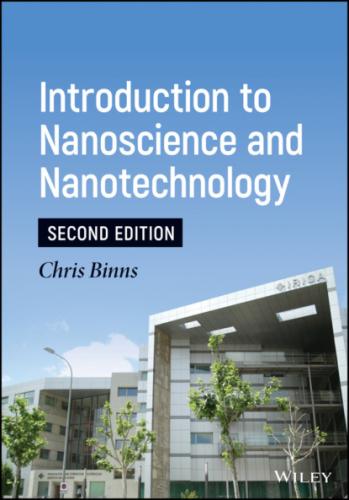Chapter 7 is new to this edition and presents nanoparticles in liquids (hydrosols), nanobubbles, and the science of nanoscale interfaces. Chapter 8 shows how combining advances in the production of nanoparticles and in biotechnology, it is possible to produce biologically active nanoparticles that can interact with specific cells in the body. These can then be used as nanoscale amplifiers in biological images, or they can be used to destroy their attached cells under the application of external stimulation, such as radio frequency waves or infrared radiation leading to powerful new treatments for cancer. Chapter 9 presents radical nanotechnology and discusses the potential for building nanofactories and autonomous machines with nanoscale components. Chapter 10 discusses how the tools of nanotechnology can be exploited to study the basic nature of vacuum itself via the Casimir effect. This is a strange “force from nothing” that arises from the zero‐point energy density of empty space. The Casimir force also has practical applications in nanotechnology and new experiments have shown how to manipulate it to practical advantage in nanomachines.
References
1 1 Research and Markets, Global Nanotechnology Market (by Component and Applications), Funding & Investment (2024). Patent Analysis and 27 Companies Profile & Recent Developments – Forecast to 2024. https://www.researchandmarkets.com/research/zc7qgf/global?w=5.
2 2 Jones, R.A.L. (2007). Soft Machines Nanotechnology and Life. Oxford: Oxford University Press. ISBN: 9780199226627.
3 3 Borgia, I., Brunetti, B., Mariani, I. et al. (2002). Heterogenous distribution of metal nanocrystals in glazes of historial pottery. Applied Surface Science 185: 206–216. https://doi.org/10.1016/S0169‐4332(01)00659‐6.
4 4 Zharinov, V.S., Picot, T., Scheerder, J.E. et al. (2020). Room temperature single electron transistor based on a size‐selected aluminium cluster. Nanoscale 12: 1164. https://doi.org/10.1039/C9NR09467A.
5 5 Everard, M.J. (2003). X‐ray scattering studies of self‐assembled nanostructures. PhD thesis. University of Leicester.
6 6 Llamosa, D., Ruano, M., Martínez, L. et al. (2014). The ultimate step towards a tailored engineering of core@shell and core@shell@shell nanoparticles. Nanoscale 6: 13483. https://doi.org/10.1039/C4NR02913E.
7 7 Krishnan, G., Verheijen, M.A., ten Brink, G.H. et al. (2013). Tuning structural motifs and alloying of bulk immiscible Mo–Cu bimetallic nanoparticles by gas‐phase synthesis. Nanoscale 5: 5375. https://doi.org/10.1039/C3NR00565H.
8 8 Dexler, E. (1990). Engines of Creation. Garden City, NY, London: Fourth Estate. ISBN: 9781872180465.
9 9 Pheonix, C. and Drexler, E. (2004). Safe exponential manufacturing. Nanotechnology 15: 869–872. https://doi.org/10.1088/0957‐4484/15/8/001.
10 10 Bitten, O., Gutman, D.B., Berkovits, R., and Frydman, A. (2017). Multiple periodicity in a nanoparticle‐based single‐electron transistor. Nature Communications 8: 402. https://doi.org/10.1038/s41467‐017‐00442‐6.
1 Size Matters
1.1 The Fundamental Importance of Size
The aim of this chapter is to instill an intuitive feel for the smallness of the structures that are used in nanotechnology and what is special about the size range involved. As we will see, the importance of the nanoscale is wrapped up with fundamental questions about the nature of matter and space that were first pondered by the ancient Greeks. Three thousand years ago, they led the philosophers Leucippus and Democritus to propose the concept of the atom. These ideas will come round full circle at the end of the book when we will see that modern answers (or at least partial answers – the issue is still hot) are very much wrapped up in nanotechnology.
First of all, let us remind ourselves how small nanostructures really are. This is a useful exercise even for professionals working in the field. The standard unit of length in the metric system is the meter, originally calibrated from a platinum–iridium alloy bar kept in Paris but since 1983 it has been defined as the distance light travels in 1/299 792 458 seconds. For convenience, so that we are not constantly writing very small or very large numbers, the metric system introduces a new prefix every time we multiply or divide the standard units by 1000. Thus, a thousandth of a meter is a milli‐meter or mm (from the Roman word mille meaning 1000); a thousandth of a millimeter (or a millionth of a meter) is a micro‐meter or μm (from the Greek word mikros meaning small). Similarly, a thousandth of a micrometer (or a billionth of a meter) is a nano‐meter or nm (from the Greek word nanos meaning dwarf). As shown in Figure I.1 in the introduction (“The Nanoworld”), we will be dealing with building blocks that vary from 100 nm across down to atoms, which are 0.1–0.4 nm across.
These days instruments can directly image nanostructures, for example, Figure 1.1 shows a scanning tunneling microscope (STM – see Chapter 5, Section 5.4.1) image of a few manganese nanoparticles with a diameter of about 3 nm deposited onto a bed of carbon‐60 molecules (“bucky balls” – see Chapter 3) with a diameter of 0.7 nm on silicon. It thus displays two different nanoparticles of interest in the same image. This could just as easily be a picture of snowballs on a bed of marbles, and it is easy to lose sight of the difference in scale between our world and that of the nanoparticles. To get some idea of the scale, take a sharp pencil and gently tap it onto a piece of paper with just enough force to get a mark that is barely visible. This will typically be about 100 μm or 100 000 nm across. If the frame in Figure 1.1 were this large, it would contain about 100 000 000 of the Mn nanoparticles and 20 000 000 000 of the carbon‐60 nanoparticles, which is about three times the population of the planet.
It may seem odd to base an entire branch of science and technology around a measure of distance, especially as length scales used in science go to much smaller than nanometers and much larger than meters. This is illustrated in
